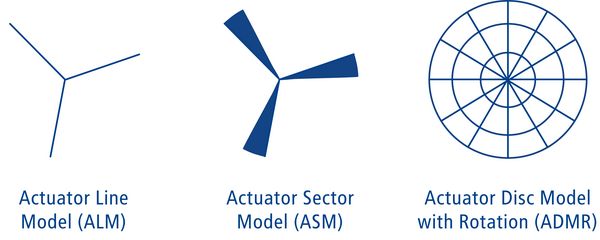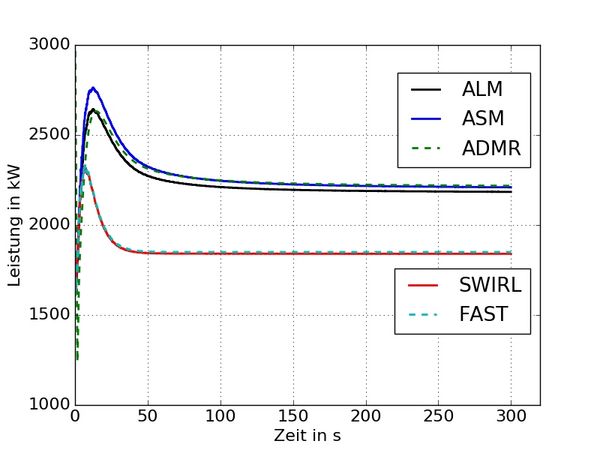PALM-FAST Coupling
Contact
Sonja Krüger
Carl von Ossietzky Universität Oldenburg
Institut für Physik
AG Energiemeteorologie
Tel: +441 798-5074
E-Mail: sonja.krueger@uni-oldenburg.de
Jun.-Prof. Dr.-Ing. Laura Lukassen
Carl von Ossietzky Universität Oldenburg
Institut für Physik
AG Numerische Fluiddynamik in der Windphysik
Tel: +49 441 798-5009
E-Mail: laura.lukassen@uni-oldenburg.de
Dr. Gerald Steinfeld
Carl von Ossietzky Universität Oldenburg
Institut für Physik
AG Energiemeteorologie
Tel: +49 441 798-5073
E-Mail: gerald.steinfeld@uni-oldenburg.de
PALM-FAST Coupling
Extension of micrometeorological methods for a better understanding of the behaviour of wind turbines
To map the interaction between a flow in the atmospheric boundary layer and a wind turbine, the aeroelastic code FAST was coupled with the large-eddy simulation model PALM. With the help of these coupled models, information about the wind turbine at different atmospheric flows is to be gained, e.g. the loads, moments and the power of the turbine can be investigated.
Different turbine models have been implemented (Figure 1) with the aim to reduce the computation time without loss of information.

Figure 2 shows first results of a 5 megawatt turbine of the National Renewable Energy Laboratory (NREL), USA. Here, the generator output was calculated in a laminar flow at 8 meters per second with different turbine models. The SWIRL model is a variant of the ASM, in which the wind speeds are measured in front of the rotor and not, as is usually the case, in the area swept by the rotor. The wind speeds at the positions of the rotor are then calculated in FAST via induction.
The coupling is to be validated with data of a 3.5 megawatt turbine from a measurement campaign that took place within the CompactWind project.

In the future, the possibilities for the derivation of footprints from large-eddy simulations with integrated Lagrange particle model will be extended.
In micrometeorology, the "footprint" is the area at the interface between the earth and the atmosphere that influences the turbulence characteristics observed at the measurement point.
The footprint calculation with the help of PALM simulations is to be extended in such a way that it is possible to determine the "footprint" not only for one point but for a whole rotor area.
A corresponding method would be very useful for site characterisation, e.g. also to identify causes of turbulence at an early stage or to check whether the effect of a subsequent change in the wind turbine's environment (e.g. erection of a building, planting of a wind shelter etc.) has an impact on the wind conditions at the turbine site.
